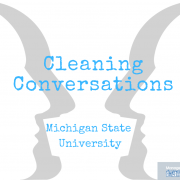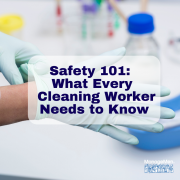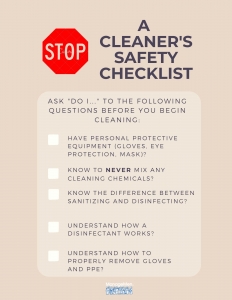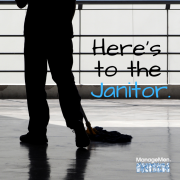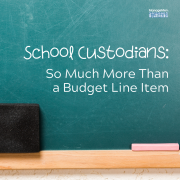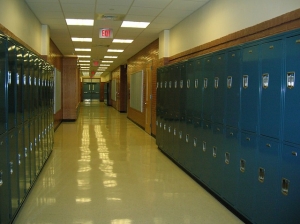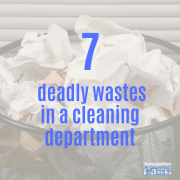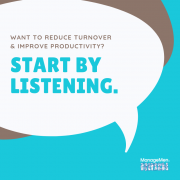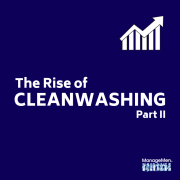Our Top 10 Most Read Blog Posts of 2020
2020: A year that will go down in the history books. That couldn’t be more true for custodial professionals who suddenly were thrust onto the public stage as a pandemic took hold throughout the world. The same goes for most of us in the cleaning industry—while manufacturers battled unprecedented demands on the supply chain, others scrambled to prepare training and new certifications. Us? Well, we were prepared. Our users were prepared.
Our founder, John Walker, had anticipated the potential for something like this to happen, going so far as to prepare a pandemic playbook. A lot of people called us, wanting to know how to better create systems around their cleaning programs. A lot of people combed our website looking for information.
If this list is any indication, we can rest assured that people will appreciate the value of cleaning—and the people who do the work of cleaning—long after 2020 is over.
10. Cleaning Classrooms Safely – Teacher’s Checklist
How can teachers make sure surfaces in their classrooms stay clean during the pandemic? We put together a checklist to help.
See the post and infographic here: https://managemen.com/cleaning-classrooms-safely-a-teachers-checklist-with-infographic/
9. Top 10 Frustrations of Custodial Professionals
The people who make it in this industry are problem solvers. Every day, they put together a new puzzle — figuring out which piece needs to go where to complete the puzzle of a clean building. It’s not an easy job, so to help others know they aren’t alone, we developed a list of the most commonly overheard challenges of custodial professionals.
Read the full list of complaints here: https://managemen.com/the-top-10-frustrations-of-custodial-professionals/
8. Coronavirus Communication: How to Tell Building Occupants We’ve Got This
To assist (OS1) teams with communicating their plans to key stakeholders and building occupants within their facilities, we developed a sample communication to help them understand that all of the necessary systems were in place for pandemic preparedness.
Read that post here: https://managemen.com/coronavirus-communication-how-to-tell-building-occupants-weve-got-this/
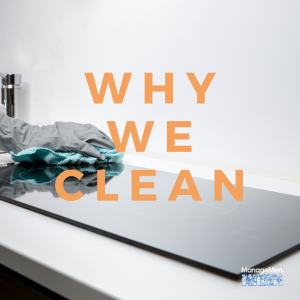
It doesn’t matter where or what you clean, this is not an easy business. We’ve pulled together a list of four extremely important reasons why cleaning matters, along with a printable to remind yourself and your team just how important your work is.
Read that post here: https://managemen.com/why-cleaning-matters/
6. Applying Maslow’s Hierarchy of Needs to a Cleaning Operation
We can benefit from looking at a cleaning operation from the framework of Maslow’s Hierarchy of Needs. There are certain fundamental needs within a custodial operation that must be met in order for the program to be effective and meet certain higher-level goals. Too often, our conversation about cleaning is just through a specific lens rather than looking at the operation as a whole.
Read more about how you can apply the Hierarchy of Needs to your cleaning operation here: https://managemen.com/applying-maslows-hierarchy-of-needs-to-a-cleaning-operation/
5. How the White Wings Cleaned Up NYC
Lacking any formalized sanitation and refuse system, New York City was drowning in garbage and filth in the late 1800s. Its current mayor, William Strong, called for Colonel George Waring to return and assume the position of sanitation engineer. The job of tackling the city’s overwhelming sanitation issues would be no easy feat, and Waring approached the job as he would approach combat on the battlefield.
Read more about how George Waring and the White Wings cleaned up New York City here: https://managemen.com/from-the-history-books-how-the-white-wings-cleaned-up-new-york-city/
4. The Case Against Spraying Disinfectant Everywhere: Raise your hand if you’ve seen a picture of a heavily suited worker spraying what’s assumed to be disinfectant on sidewalks and streets in the past four months.
For cleaning professionals, this image might be somewhat alarming. Mostly because it demonstrates what we already know—that the majority of people throughout the world have a limited understanding of the science of cleaning.
Read more: https://managemen.com/the-case-against-spraying-disinfectant-everywhere/
3. Please Take a Minute to Thank a Cleaner: While we rest, cleaners are lifting heavy trash bags and mop buckets, pushing vacuums and pulling overstocked carts. But this effort doesn’t come without a price. Due to the labor-intensive nature of their work, janitors have one of the highest rates of job-related injuries. Injuries from slips and falls or musculoskeletal disorders (MSDs) that cause extreme pain in areas such as their backs (46 percent of all custodial-related MSDs), shoulders (15 percent of custodial-related MSDs), necks and legs.
Read more: https://managemen.com/please-take-a-minute-to-thank-a-cleaner/
2. Think Janitor is a Dirty Word? No, and Here’s Why: If you trace the etymology of the word “janitor,” it doesn’t take much research to find that the term is tied to deity. “Janus” from which “janitor” is derived, was a Roman god of beginnings and ends; metaphorically he represented doors and passages. In images, he’s often depicted with two faces that allow him to look to the future and the past.
Read why Janitor isn’t a dirty word here: https://managemen.com/think-janitor-is-a-dirty-word-no-and-heres-why/
1. Why Dirty Schools are a Big Problem—and What We Can Do to Clean Them Up
The top post of this year looks at some of the most common issues that stem from dirty schools—things like poor performance and reduced morale. But it’s not just the issues—we dig into strategies that could help fix the problem of dirty schools. Spoiler alert: It starts with management.
Read the post here: https://managemen.com/why-dirty-schools-are-a-big-problem-and-what-we-can-do-to-clean-them-up/


